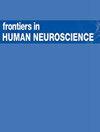在执行和观察汽车驾驶过程中,研究无差错和易出错反馈条件下的多层次认知过程
IF 2.4
3区 医学
Q3 NEUROSCIENCES
引用次数: 0
摘要
事故分析报告一再指出,冲出路面事故在道路交通死亡事故中占相当大的比例,尽管在减轻破坏性后果的辅助技术方面取得了相当大的进步,但人们对驾驶员在此类事故中的大脑反应却知之甚少。虽然有各种文献记录了转向运动、驾驶员精神状态以及分心和疲劳对驾驶表现的影响的神经相关性,但汽车连续偏离道路的大脑皮层基质--即大脑如何呈现预定位置和观察到的汽车位置之间的不同差异,并随后分配定制级别的纠正措施--仍不清楚。此外,视觉和错误反馈处理、性能监测或运动控制等多个子过程的叠加,也使得对汽车驾驶任务中大脑参与区域的清晰解释变得更加复杂。因此,在本研究中,我们尝试在无差错和易出错的车辆操作条件下,采用被动和主动转向条件,将这些子过程分离开来。我们分 13 次记录了 26 名参与者的脑电信号,同时测量了汽车驾驶任务中的两对执行者(主动转向)和观察者(严格观察)。我们在执行者身上观察到了共同的大脑模式,不管是在无错误还是有错误的车辆操作条件下,尽管在有错误的条件下,频谱活动从运动β转向枕叶α振荡。此外,在主动转向条件下,观察者和执行者之间出现了明显的前中枢差异,并可追溯至尾前扣带回皮层,这表明运动行为认知控制水平有所提高。最后,我们展示了转向信号和汽车位置的回归结果,表明利用脑电图对连续偏离道路的情况进行回归是可行的。本文章由计算机程序翻译,如有差异,请以英文原文为准。
Investigating multilevel cognitive processing within error-free and error-prone feedback conditions in executed and observed car driving
Accident analyses repeatedly reported the considerable contribution of run-off-road incidents to fatalities in road traffic, and despite considerable advances in assistive technologies to mitigate devastating consequences, little insight into the drivers’ brain response during such accident scenarios has been gained. While various literature documents neural correlates to steering motion, the driver’s mental state, and the impact of distraction and fatigue on driving performance, the cortical substrate of continuous deviations of a car from the road – i.e., how the brain represents a varying discrepancy between the intended and observed car position and subsequently assigns customized levels of corrective measures – remains unclear. Furthermore, the superposition of multiple subprocesses, such as visual and erroneous feedback processing, performance monitoring, or motor control, complicates a clear interpretation of engaged brain regions within car driving tasks. In the present study, we thus attempted to disentangle these subprocesses, employing passive and active steering conditions within both error-free and error-prone vehicle operation conditions. We recorded EEG signals of 26 participants in 13 sessions, simultaneously measuring pairs of Executors (actively steering) and Observers (strictly observing) during a car driving task. We observed common brain patterns in the Executors regardless of error-free or error-prone vehicle operation, albeit with a shift in spectral activity from motor beta to occipital alpha oscillations within erroneous conditions. Further, significant frontocentral differences between Observers and Executors, tracing back to the caudal anterior cingulate cortex, arose during active steering conditions, indicating increased levels of motor-behavioral cognitive control. Finally, we present regression results of both the steering signal and the car position, indicating that a regression of continuous deviations from the road utilizing the EEG might be feasible.
求助全文
通过发布文献求助,成功后即可免费获取论文全文。
去求助
来源期刊

Frontiers in Human Neuroscience
医学-神经科学
CiteScore
4.70
自引率
6.90%
发文量
830
审稿时长
2-4 weeks
期刊介绍:
Frontiers in Human Neuroscience is a first-tier electronic journal devoted to understanding the brain mechanisms supporting cognitive and social behavior in humans, and how these mechanisms might be altered in disease states. The last 25 years have seen an explosive growth in both the methods and the theoretical constructs available to study the human brain. Advances in electrophysiological, neuroimaging, neuropsychological, psychophysical, neuropharmacological and computational approaches have provided key insights into the mechanisms of a broad range of human behaviors in both health and disease. Work in human neuroscience ranges from the cognitive domain, including areas such as memory, attention, language and perception to the social domain, with this last subject addressing topics, such as interpersonal interactions, social discourse and emotional regulation. How these processes unfold during development, mature in adulthood and often decline in aging, and how they are altered in a host of developmental, neurological and psychiatric disorders, has become increasingly amenable to human neuroscience research approaches. Work in human neuroscience has influenced many areas of inquiry ranging from social and cognitive psychology to economics, law and public policy. Accordingly, our journal will provide a forum for human research spanning all areas of human cognitive, social, developmental and translational neuroscience using any research approach.
 求助内容:
求助内容: 应助结果提醒方式:
应助结果提醒方式:


